Recursion and Fractals
Chapter: Recursion and Fractals
The term fractal was coined in 1972 by Benoit Mandelbrot. It refers to
shapes that, when you magnify any part, you obtain another shape that is very similar to the original. You generated some well-known fractal
curves in Lab 10.
Fractals abound in nature. Think of a coastline. These four pictures were all
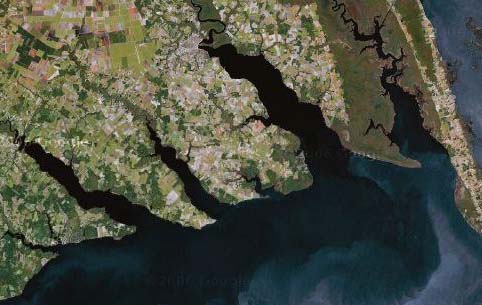 obtained from satellite images provided by google maps. They are at vastly
different scales. One is at a scale of hundreds of miles per inch. Another
obtained from satellite images provided by google maps. They are at vastly
different scales. One is at a scale of hundreds of miles per inch. Another
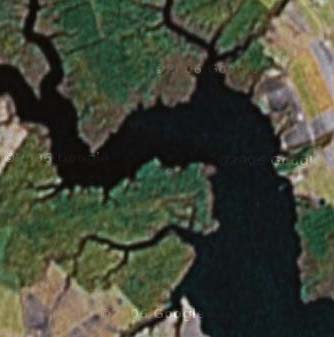 is mere feet to the inch. There are some clues as to which is which, but these
are provided mostly by limitations in the image resolution and in the
is mere feet to the inch. There are some clues as to which is which, but these
are provided mostly by limitations in the image resolution and in the 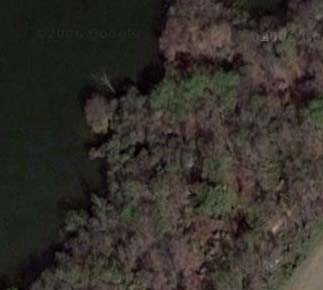 screen resolution. If we had unlimited resolution (as, essentially, we do
once we abandon our satellites, our cameras, our computers and other
screen resolution. If we had unlimited resolution (as, essentially, we do
once we abandon our satellites, our cameras, our computers and other 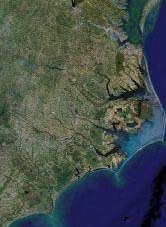 technological impediments, and relied on our natural senses) it would be
very hard for us to distinguish which of the pictures is at which resolution.
technological impediments, and relied on our natural senses) it would be
very hard for us to distinguish which of the pictures is at which resolution.
Recursive programming is used in computer graphics to try to simulate nature. The wikipedia timeline of the use of CGI (computer graphics) in movies indicates the effective use of fractal techniques in Star Trek II The
Wrath of Khan as long ago as 1982. Below, there are two pictures of trees: One is of a real tree, the other is of a "tree" generated from an L-system. Can you tell which is which? Wikipedia has a good explanation of Lindenmeyer systems.
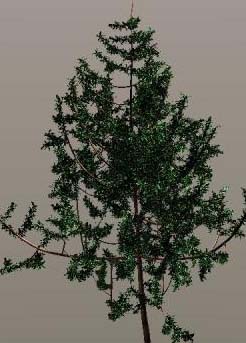
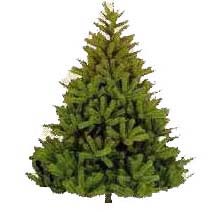
Below is an applet developed by Kim Bruce and Andrea Danyluk, to which I have
added a start button. It draws "parsley", and then lets you move the
parsley plant around with the mouse.
Here is the code for the applet. Nothing new nor
unexpected. You should be able to write such code in your sleep by now! Note that the important feature is the call to
new ParsleyTree(new Location(200,300), 150.0, Math.PI/2.0, canvas);
What is a ParsleyTree? Well, if you watch the construction carefully, just as
you watched the Tower of Hanoi animation, you should be able to spot the
recursion. A ParsleyTree consists of
- a stem,
- and three more smaller ParsleyTrees
At least that is so until the ParsleyTrees get below a certain minimum size. At which point the recursion terminates. That is our base case.

- Q. 1
- Does nature have a base case?

Here is Java code for ParsleyTree. Load it and the
previous LivingParsley into BlueJ and make sure it works. Make small
adjustments to the values in the static final double constants until
you like the look of your parsley.
Submit your best parsley
Very similar to the parsley is this Broccoli applet (mostly due to Kim Bruce
but with minor changes by me):
Watch it and see if you can spot the recursion and what you need to do. One
thing is that the base case involves actually doing something (placing that
yellow flower).
Build an applet along the lines of Broccoli. It doesn't need to be very
similar, but it does need to be a little more sophisticated than your
parsley. Be imaginative if you have the time and the inclination.
rhyspj@gwu.edu
 obtained from satellite images provided by google maps. They are at vastly
different scales. One is at a scale of hundreds of miles per inch. Another
obtained from satellite images provided by google maps. They are at vastly
different scales. One is at a scale of hundreds of miles per inch. Another
 is mere feet to the inch. There are some clues as to which is which, but these
are provided mostly by limitations in the image resolution and in the
is mere feet to the inch. There are some clues as to which is which, but these
are provided mostly by limitations in the image resolution and in the  screen resolution. If we had unlimited resolution (as, essentially, we do
once we abandon our satellites, our cameras, our computers and other
screen resolution. If we had unlimited resolution (as, essentially, we do
once we abandon our satellites, our cameras, our computers and other  technological impediments, and relied on our natural senses) it would be
very hard for us to distinguish which of the pictures is at which resolution.
technological impediments, and relied on our natural senses) it would be
very hard for us to distinguish which of the pictures is at which resolution.
